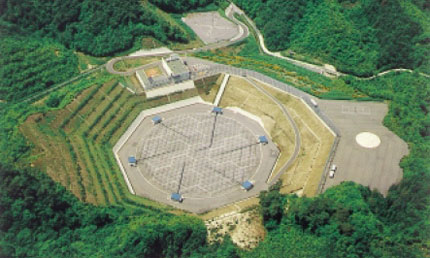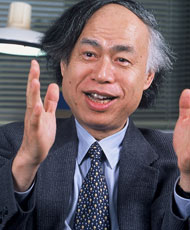Frontiers of Radio Science in the Study of Space and the Earth's Atmosphere
The Earth's atmosphere makes a gradual change from a dense neutral gas near the surface to an extremely dilute ionized gas (or plasma) as we approach planetary space. This "inner space" is considered to be the boundary of our environment and the base from which the human race will depart for exploration of "outer space." The Radio Science Center for Space and Atmosphere (RASC) of Kyoto University has promoted research relevant to space and the atmosphere with advanced radio techniques. Radar remote sensing is applied to the part of the atmosphere closest to the Earth, while in-situ measurements with satellites and simulations with computers are utilized for space plasmas father out. The ultimate goal of the latter research is to establish the basic techniques for a solar power station (SPS). Here, we will introduce primarily the SPS and the atmospheric radars which radiate controlled, high-power radio waves into space.
The SPS will ultimately be an energy source for the human race. It will intercept immense amounts of solar radiation using huge solar cells in space to generate electric power which will then be transferred to the surface along a microwave beam. RASC has been developing the basic techniques of the SPS, focusing on the microwave power transmission (MPT) aspect. It has been conducting various demonstration experiments of MPT since it succeeded in an MPT experiment on a space borne rocket in 1983. A Microwave Energy Transmission LABoratory (METLAB) with an anechoic radio-wave chamber specifically designed for MPT experiments was constructed at RASC in 1996. The development of new MPT systems has since been conducted at METLAB. RASC plans to perform a space MPT experiment with a power satellite in the near future.
Atmospheric radar techniques are developed and employed for sensing atmospheric dynamics. Winds and other parameters aloft are deduced from echoes reflected back from the atmosphere. RASC established the MU (Middle and Upper atmosphere) radar in 1984 and has resolved numerous mysteries of the atmosphere with it, especially above 10 km in the region once called the "Ignorosphere" due to the scarcity of observations from that region. The region used to be thought so quiet that no significant meteorological phenomena occurred there. However, the MU radar has revealed that various atmospheric waves are raging there, and even the seasonal change of global-scale winds around 60-90 km is controlled by these waves propagating upward from near the surface. There still remain numerous questions for the MU radar to investigate regarding the sources and global distribution of the waves.
The equatorial region, especially near Indonesia, is regarded as the primary origin of global-scale motions in the Earth's atmosphere. RASC has recently established a MU-like radar called the "Equatorial Atmosphere Radar" (EAR) at the equator on Sumatra Island, Indonesia. It is expected that a number of the mysteries of the equatorial atmosphere will be enlightened with the EAR through collaborations between RASC and its Indonesian counterpart in the near future.

An aerial view of the MU radar of Kyoto University

Shoichiro Fukao
Born in 1943.
Graduate of the master's program, GraduateSchool of Engineering, Kyoto University
Ph.D., Kyoto University
Professor and Director, Radio Science Center forSpace and Atmosphere (RASC), Kyoto University
URL Radio Atmospheric Science Center Radar Group (External Link)
"You must have dreams to do research at the university level."
Even at Kyoto University, which is sometimes known as "Expedition University," the broad scope of research fields covered by RASC stands out. But at the same time, the center's work is firmly rooted in real life. For example, it is hoped that observation of the atmosphere at the equator will make it possible to predict changes in weather and climate on a global scale, and to thereby contribute to more efficient agricultural production. Making use of ground-based radars in his work, Prof. Fukao performs research propelled by dreams but with his feet firmly on the ground. After charming us with his kindly smile and witty conversation, his facial expression as he turns to check data on a monitor screen is all concentration, a striking contrast with his jovial earlier self.

